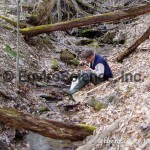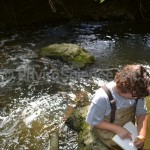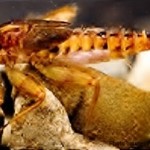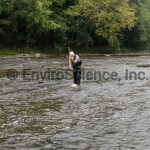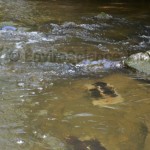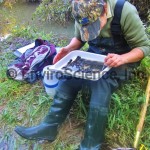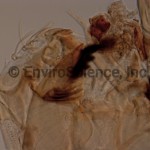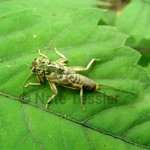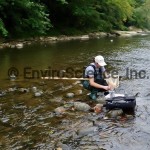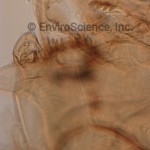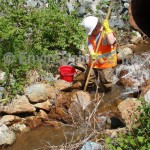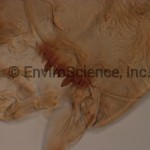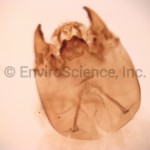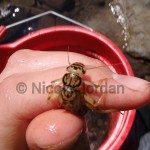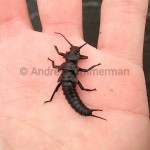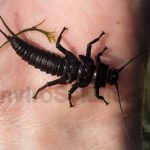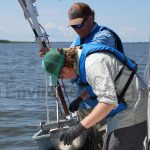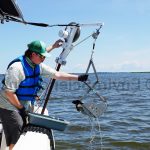Benthic Macroinvertebrate Surveys
Our Macroinvertebrate Biologists
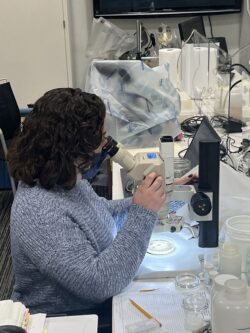 The sensitivity of macroinvertebrates to changes in environmental quality renders them an integral part of any biomonitoring program. The EnviroScience Benthic Macroinvertebrate Team consists of entomologists and aquatic biologists who are skilled at utilizing a variety of methods to collect benthic macroinvertebrates from aquatic habitats, including quantitative, semi-quantitative, or qualitative methods, depending on project requirements.
The sensitivity of macroinvertebrates to changes in environmental quality renders them an integral part of any biomonitoring program. The EnviroScience Benthic Macroinvertebrate Team consists of entomologists and aquatic biologists who are skilled at utilizing a variety of methods to collect benthic macroinvertebrates from aquatic habitats, including quantitative, semi-quantitative, or qualitative methods, depending on project requirements.
These macroinvertebrate data are used individually or in combination with other environmental characteristics (habitat, fish, and/or physical and analytical chemistry) to assess the extent of environmental impairment often caused by pollutants.
The aquatic macroinvertebrate biologists at EnviroScience are nationally certified in identifying both eastern and western taxa. Our macroinvertebrate team has extensive experience using these organisms to monitor water quality throughout the Northeast, Midwest, and Southeast for a diversity of clients, including local municipalities, private industries, and state and federal government agencies.
Our macroinvertebrate biologists are qualified according to both national and state standards. EnviroScience taxonomists hold the following certifications:
- SFS (NABS) Certified Level 2 Group 1 General Arthropods/Eastern
- SFS (NABS) Certified Level 2 Group 3 Eastern Chironomidae
- SFS (NABS) Certified Level 2 Group 3 Eastern EPT
- SFS (NABS) Certified Level 2 Group 3 Western Chironomidae
- SFS (NABS) Certified Level 2 Group 3 Western EPT
- Ohio EPA Level 3 QDC Macroinvertebrates for the collection, identification, and evaluation of macroinvertebrate communities
What are Macroinvertebrates?
By definition, macroinvertebrates are organisms without backbones, which are visible to the eye without the aid of a microscope. Aquatic macroinvertebrates live on, under, and around rocks and sediment on the bottoms of lakes, rivers, and streams. As a result of their habitat choice, macroinvertebrates are often regarded as “benthos,” which refers collectively to organisms that live on, in, or near the bottom.
Examples of freshwater benthic macroinvertebrates include the immature and adult stages of many different types of invertebrates. A freshwater benthic community may consist of the immature stages of many flies, beetles (adults and immatures), mayflies, caddisflies, stoneflies, dragonflies, aquatic worms, snails, leeches, and numerous other organisms that inhabit the benthos.
How are these organisms used in environmental assessments?
Benthic macroinvertebrates, especially aquatic insects, represent a choice group of organisms used in biological monitoring programs. Macroinvertebrates within the same system may be residents for several months to multiple years, depending on the lifespan of the particular organism. Macroinvertebrate communities, therefore, reside in an aquatic system long enough to reflect the chronic effects of pollutants and yet short enough to respond to relatively acute changes in water quality.
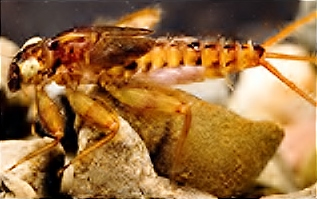
Mayfly nymph (Maccaffertium ithaca)
Unlike fish, these populations tend to be relatively immobile, and as a result, are continuously exposed to the constituents of the surface water they inhabit. Thus, because of the limited mobility of macroinvertebrates and their relative inability to move away from adverse conditions, the location of chronic sources of pollution often can be pinpointed by comparing communities of these organisms.
Macroinvertebrates exhibit varying responses to changes in water chemistry, water quality, and physical habitat. Each macroinvertebrate’s response to environmental perturbations produces measurable and often predictable shifts in abundance and composition at the community level.
Individually, macroinvertebrates can also be used to indicate sublethal effects, such as mouthpart deformities in chironomid midges (aquatic fly larvae). Benthic macroinvertebrates and chironomids in particular, are used as bioindicators for environmental stress in aquatic ecosystems at different levels, including morphological deformities. Deformities of invertebrates are used frequently as ecotoxicological endpoints in cases of legacy environmental issues.
Benthic Macroinvertebrate Sampling
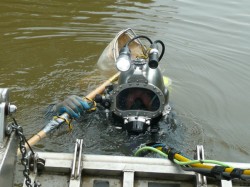
Many watershed monitoring programs include biological indicators in addition to chemical and physical tests for routine monitoring. Because of their sensitivity to different degrees of pollution, shifts in macroinvertebrate communities can identify the impacts of pollution as well as the effectiveness of pollution control activities. According to the Clean Water Act, individual states are required to report those waters that do not support their designated uses.
Biological surveys directly examine the aquatic communities in streams and any stressors which may affect them, and are, therefore, ideal tools to determine whether a stream’s designated aquatic life uses are supported. Over time, studies of stream macroinvertebrates can be used to identify water quality trends, whether increasing or decreasing, at a site over several years or decades. Additionally, benthic macroinvertebrate sampling can be used to evaluate a catastrophic environmental event, such as a spill or explosion from an environmental standpoint, and to track the acute and chronic effects of a system’s recovery over time.
Surveys of aquatic insect communities can be used to identify areas of concern within streams and rivers, as they can reflect the presence of non-optimal conditions that other measurements (such as chemical monitoring) might miss. Individual stream sites can then be ranked from best to worst in comparison to reference conditions, and priorities can be set for their improvement.
Habitat assessments used in conjunction with aquatic surveys can help determine whether shifts in benthic community structure are caused, at least in part, by habitat limitations such as bank erosion, siltation, or substrate embeddedness. In addition, aquatic surveys using benthic macroinvertebrates are an integral part of studies conducted to comply with requirements set forth within:
- NARS
- Aquatic Resource Permitting
- Stream Monitoring
- Threatened and Endangered Species Surveys Requirements by the Endangered Species Act (ESA)
- Natural Resource Damage Assessment (NRDA)
- Watershed Inventories
- National Pollution Discharge Elimination System (NPDES) Compliance Monitoring
- TMDL (Total Maximum Daily Load) Studies
- Satisfy RCRA or CERCLA Requirements by U.S. Environmental Protection Agency (EPA)
- Environmental Management
- Site Inventory
- Environmental Incident Management
- Construction and Development
- Hydrologic Determination
- Wetlands and Streams – Emergency Permitting, Restoration, HHEI
Customized benthic macroinvertebrate biomonitoring
Our experts can provide a customized benthic macroinvertebrate biomonitoring program, which may include the following applications: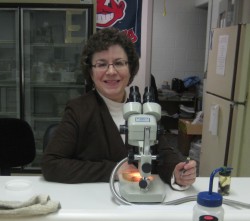
Field Sampling – EnviroScience routinely collects aquatic communities from streams, rivers, lakes, and estuaries following standardized protocols.
Taxonomic Services – Our taxonomists provide quality data evaluation of samples collected using both federal and state protocols.
Study Designs – Our team is able to design water quality studies to assess the level of impairment in relation to reference conditions within a watershed. Our biologists can provide measures to mitigate the source and the effects of stressors on surface water.
Data Analysis – Our benthic biologists are experienced in providing detailed analyses of the structure and function of benthic communities through the use of state and federal protocols.
Water Quality Monitoring – Using quantitative stream assessment analysis, such as the invertebrate community index (ICI), ES’s macroinvertebrate biologists can determine the current attainment status of a particular surface water.
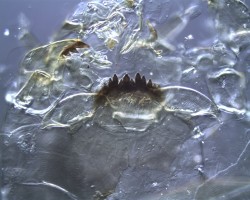
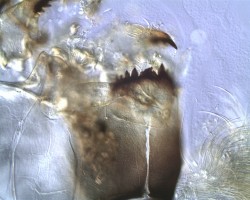
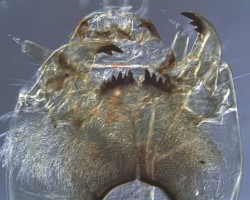
Chironomus from left to right: deformed middle tooth, normal, asymmetrical. Photos courtesy of Brian Duffy.
In Action
- Stonefly – Pterphmarcys spp – collected during an ES macroinvertebrate survey
- Sediment and benthic macroinvertebrate ponar sampling USEPA NCCA
- Sediment and benthic macroinvertebrate ponar sampling USEPA NCCA
Need help with your project?
Our experts are here to discuss your needs and how we can help you move your project forward. Fill out the form below for more information on our services or to request a quote, and we’ll get back to you within 24 hours. If you need a response within an hour or less, please call us at (888) 866-8540.
Few environmental firms in the country retain EnviroScience’s degree of scientific know-how, talent, and capability under one roof. The diverse backgrounds of our biologists, environmental engineers, scientists, and divers enable us to provide comprehensive in-house services and an integrated approach to solving environmental challenges—saving clients time, reducing costs, and ensuring high-quality results.
Our client guarantee is to provide “Excellence in Any Environment,” meaning no matter what we do, we will deliver on our Core Values of respect, client advocacy, quality work, accountability, teamwork, and safety. EnviroScience was created with the concept that we could solve complex problems by empowering great people. This concept still holds true today as our scientists explore the latest environmental legislation and regulations and incorporate the most up-to-date technology to gather and report data.
EnviroScience expertise includes but is not limited to aquatic surveys (including macroinvertebrate surveys and biological assessments); ecological restoration; ecological services (including impact assessments, invasive species control, and water quality monitoring); emergency response; engineering and compliance services; endangered mussel surveys; laboratory and analysis; stormwater management; sustainability services; threatened and endangered species; and wetlands and streams (including delineation and mitigation). Further, EnviroScience is one of the few biological firms in the country that is a general member of the Association of Diving Contractors International (ADCI) and offers full-service commercial diving services.
